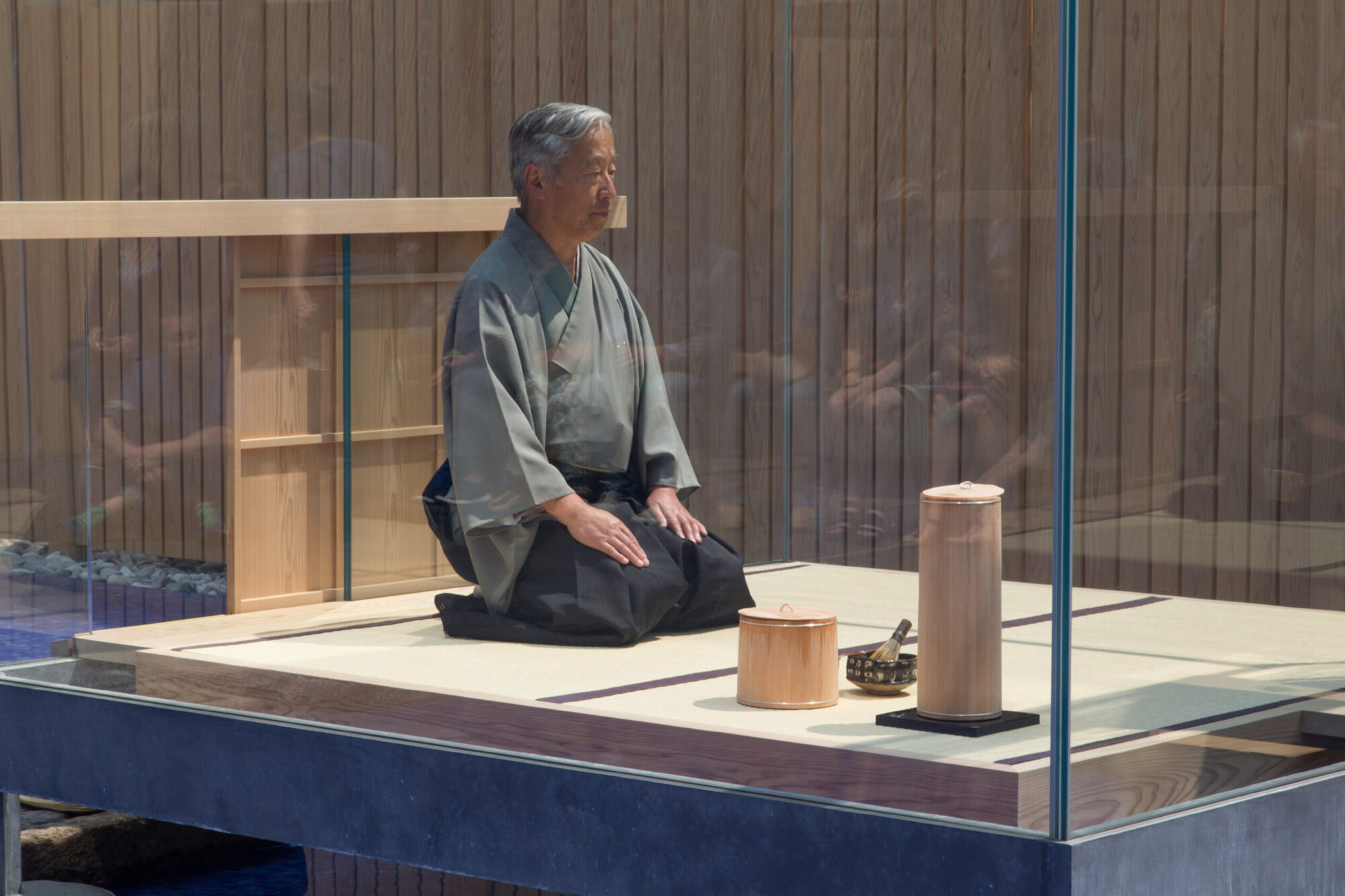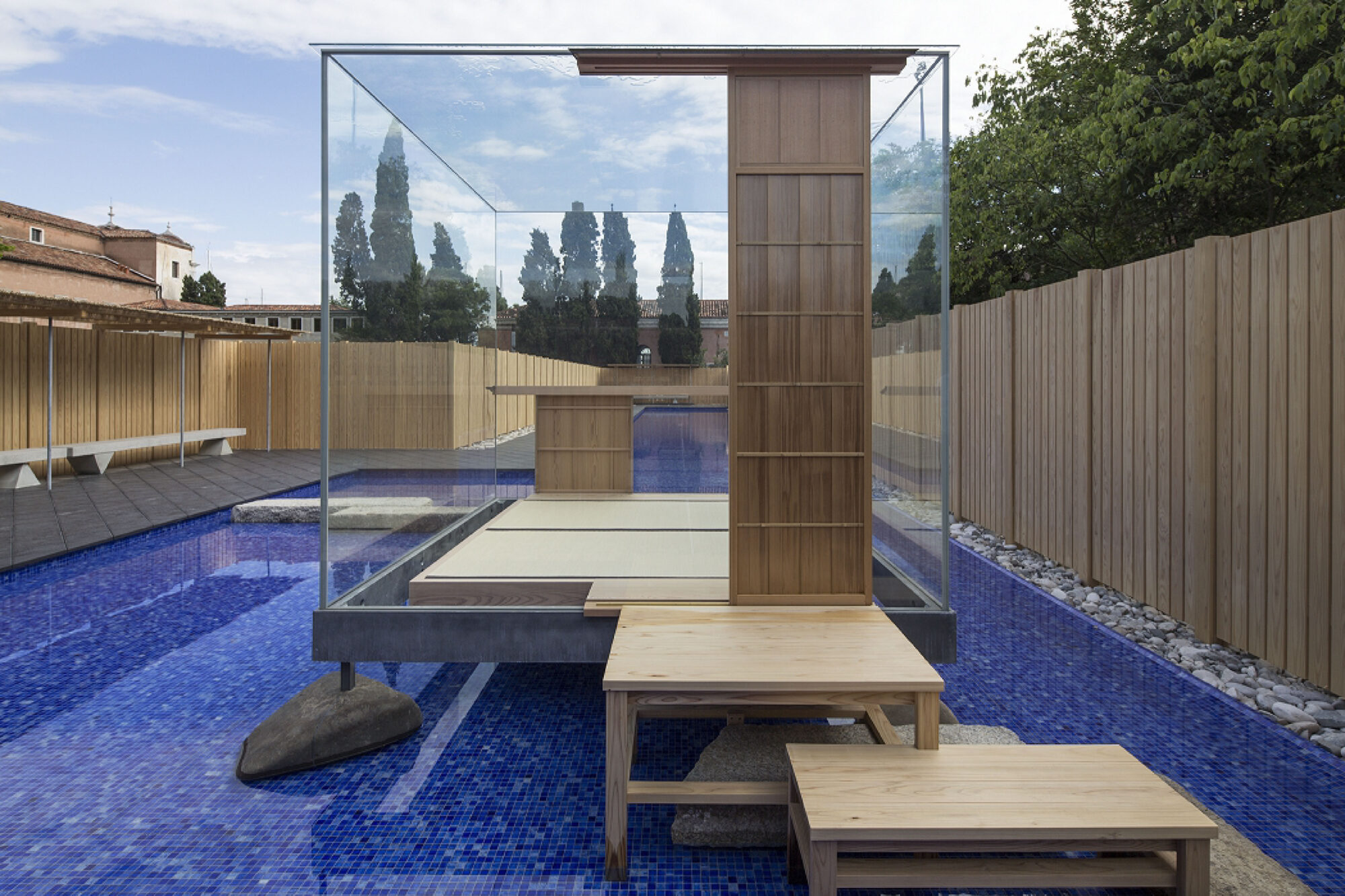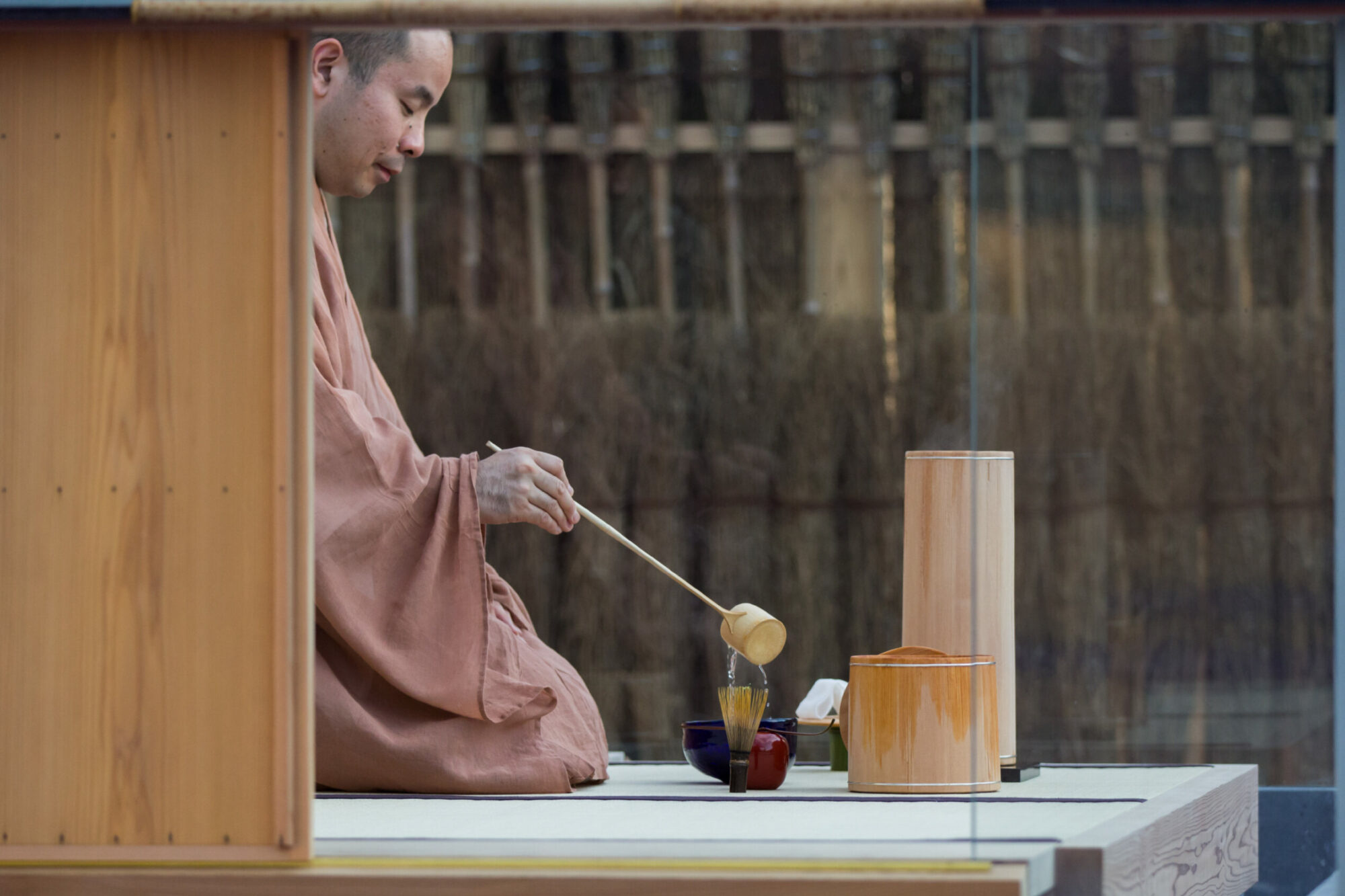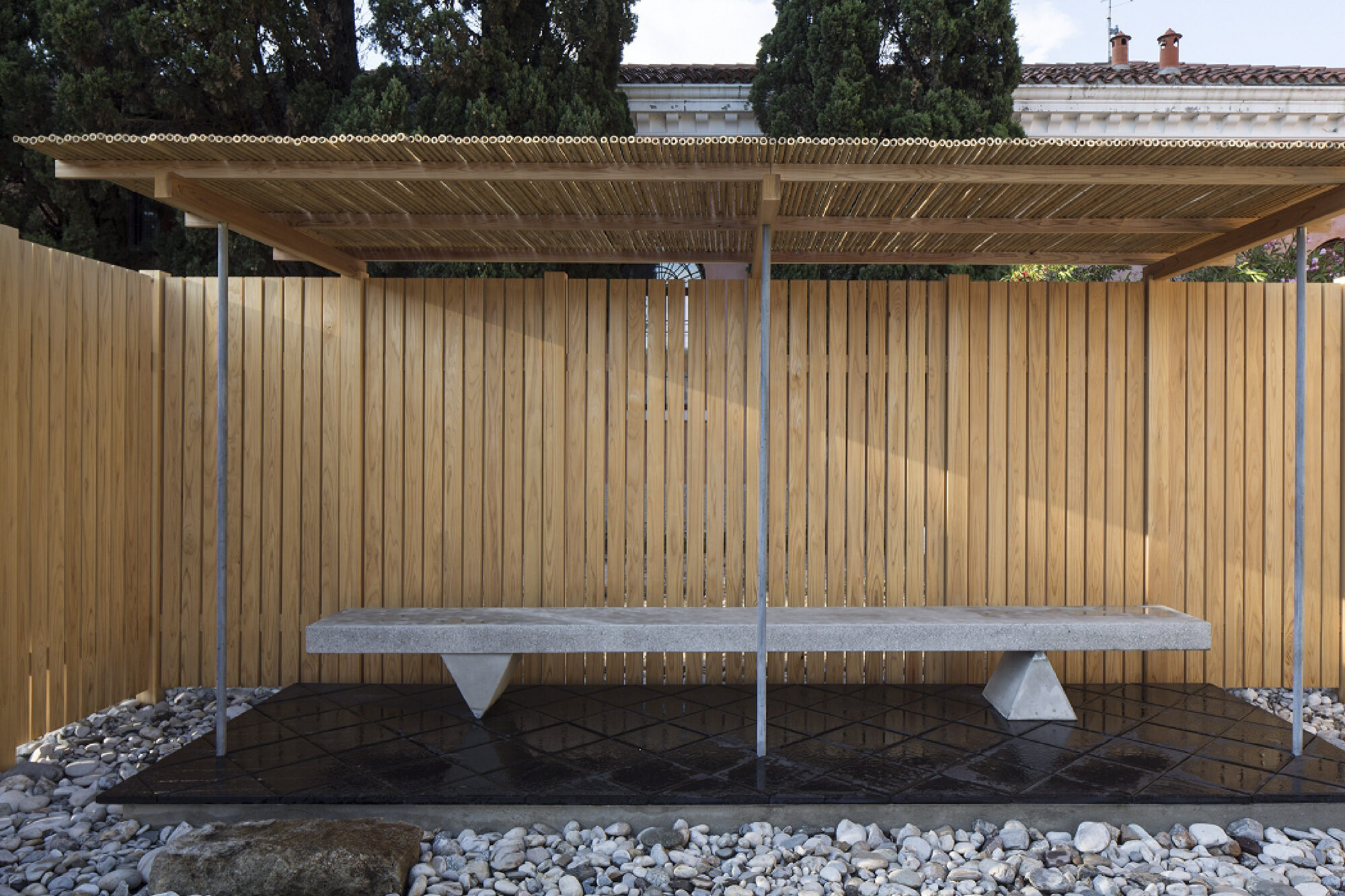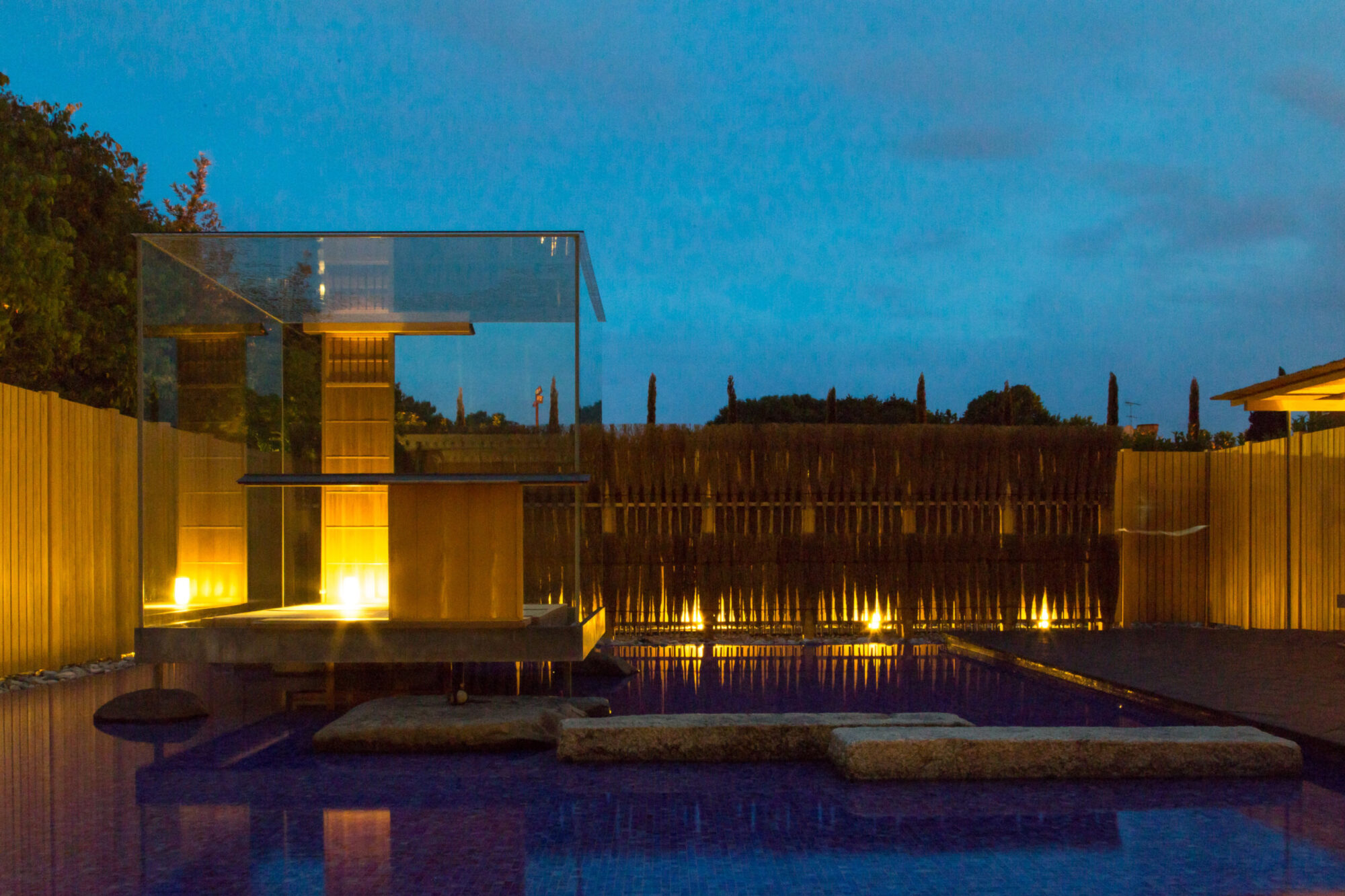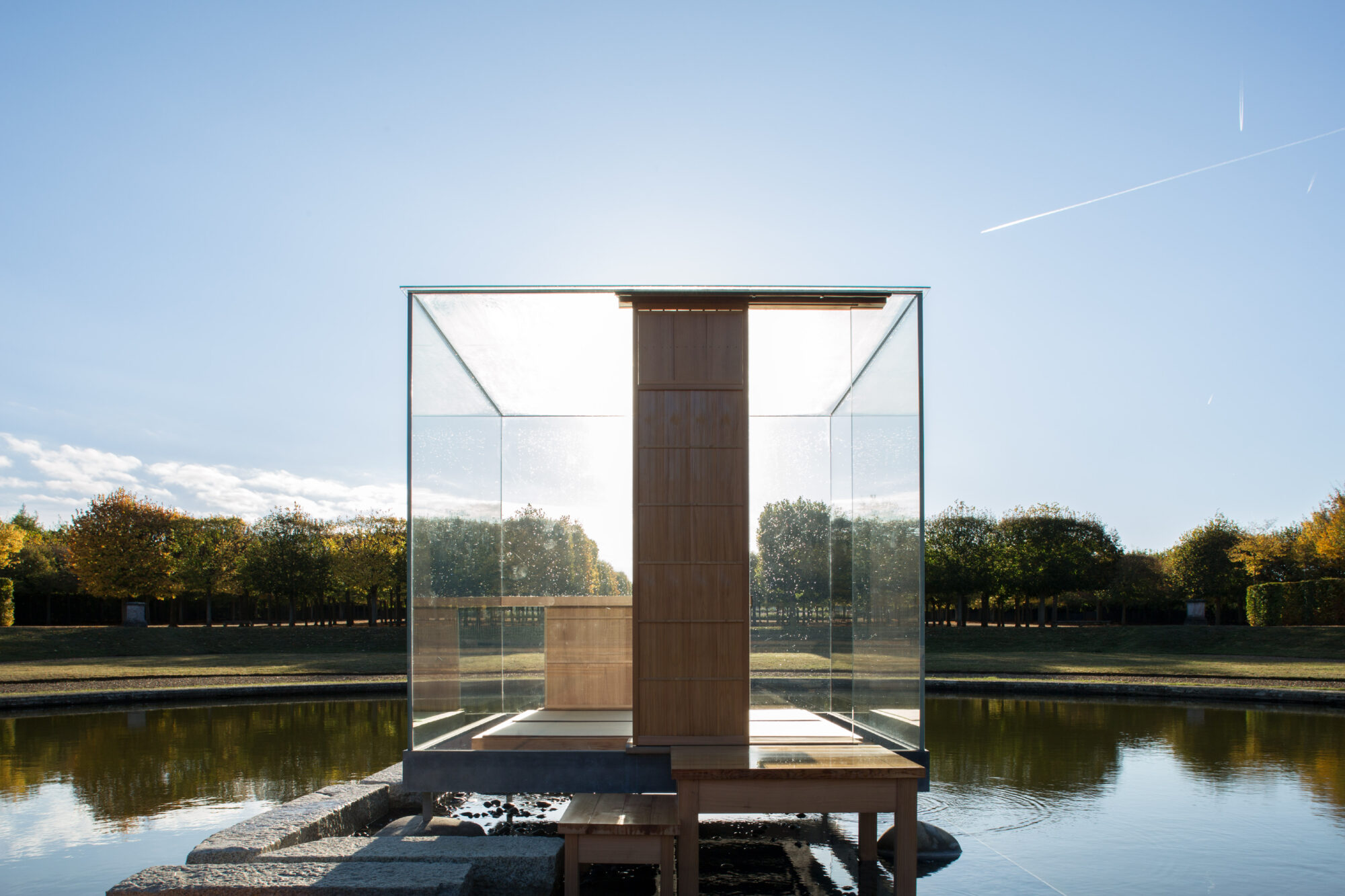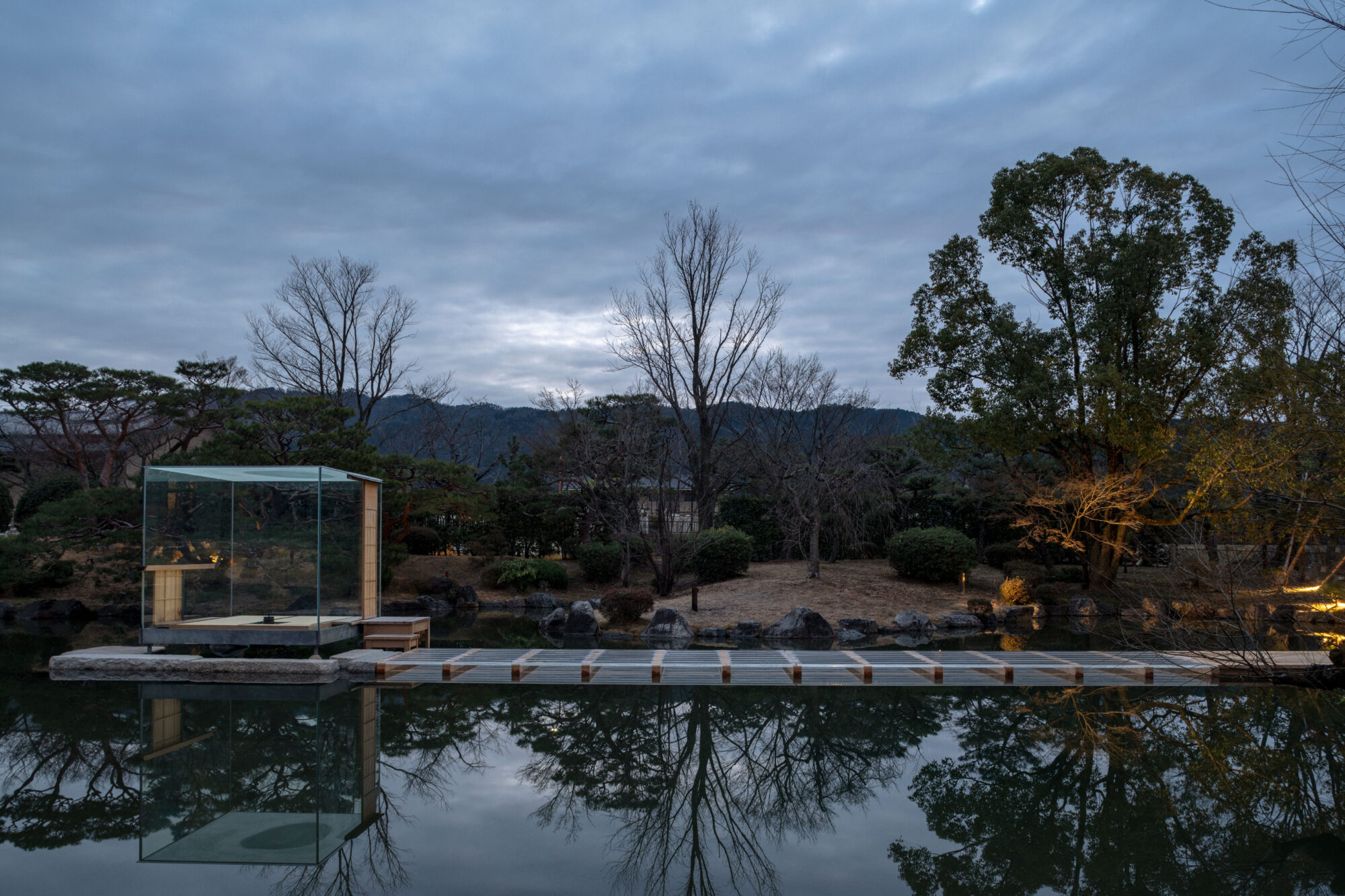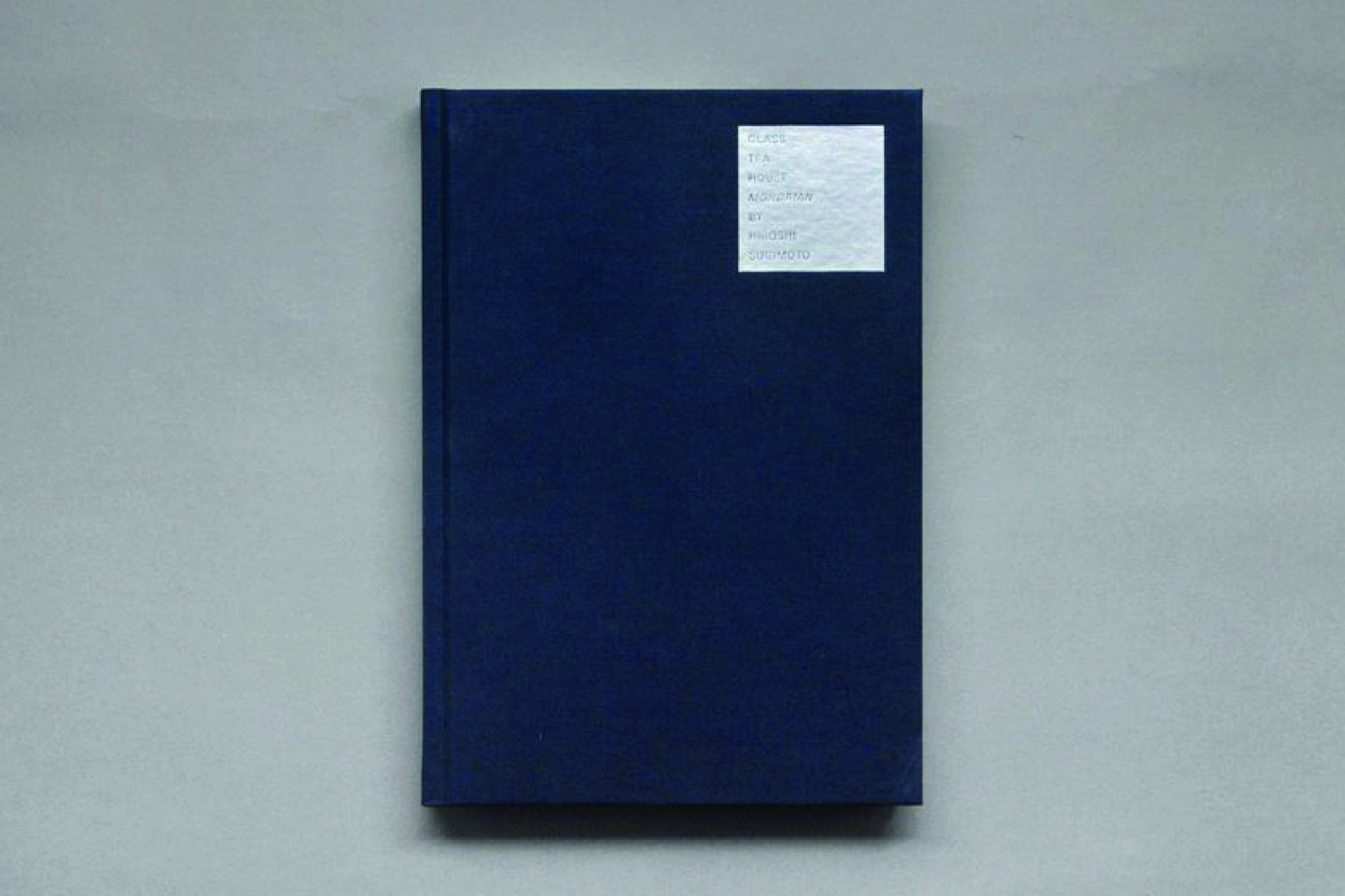Hiroshi Sugimoto: Glass Tea House 'Mondrian'
Le Stanze del Vetro–Fondazione Giorgio Cini, Venice, 2014–16
The Glass Tea House Mondrian is an installation by the artist Hiroshi Sugimoto whose title is inspired by the abstraction found in the 16th century Japanese tea ceremony as perfected by Sen no Rikyû. World-renowned for his black and white photography, this work marked Sugimoto's first architectural intervention in Venice. The environment consists of a floating glass cube that sits inside a reflecting pool clad with a glass Bisazza mosaic. A path of custom-made ceramic pavers leads the visitor to a viewing area to witness the tea ceremony performed within the cube at regular intervals. The perimeter of the area is delineated with a fence made of Japanese cedar, modelled after the Shinto Ise-Shrine.
D.H.office was brought in to de-install, pack and store the pavilion, as well as advise on future exhibition locations for the piece. David Hrankovic also edited and produced a book to accompany the work, published by Walther König in 2015. Following its presentation in Venice, Glass Tea House Mondrian was installed temporarily in the gardens of Versailles and at the Kyoto City KYOCERA Museum of Art, before moving to its final resting place at the Benesse Art Site on Naoshima Island, Japan.
